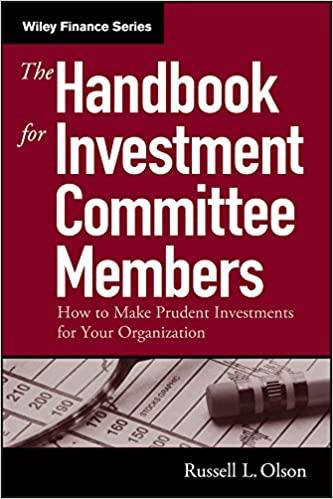17 3 points eBook Hint Print References Dickinson Company has $11,800,000 million in assets. Currently half of these assets are financed with long-term debt at 9.0 percent and half with common stock having a par value of $8. Ms. Park, Vice President of Finance, wishes to analyze two refinancing plans, one with more debt (D) and one with more equity (E). The company earns a return on assets before interest and taxes of 9.0 percent. The tax rate is 35 percent. Tax loss carryover provisions apply, so negative tax amounts are permissable. Under Plan D, a $2,950,000 million long-term bond would be sold at an interest rate of 11.0 percent and 368,750 shares of stock would be purchased in the market at $8 per share and retired. Under Plan E, 368,750 shares of stock would be sold at $8 per share and the $2,950,000 in proceeds would be used to reduce long-term debt. a. Compute earnings per share considering the current plan and the two new plans. Note: Round your answers to 2 decimal places. Earnings per share Current Plan Plan D T Plan E




b-1. Compute the earnings per share if return on assets fell to 4.50 percent. Note: Negative amounts should be indicated by a minus sign. Round your onswers to 2 decimal places. Leave no cells blank be certain to enter 0 wherever required. b-2. Which plan would be most favorable if return on assets fell to 4.50 percent? Consider the current plan and the two new plans. Current Plan Plan D Plan E b-3. Compute the earnings per share if return on assets increased to 14.0 percent Note: Round your answers to 2 decimal places. b.4. Which plan would be most favorable if return on assets increased to 140 percent? Consider the current plan and the two new plans. Plan D Current Plan Plan E c-1. If the market price for common stock rose to $10 before the restructuring, compute the earnings per share. Continue to assume that $2,950,000 million in debt wil be used to retire stock in Plan D and $2,950,000 million of new equity witl be sold to retire debt in Plan E. Also assume that return on assets is 90 percent: Note: Round your answers to 2 decimal places. c-2. If the market price for common stock rose to $10 before the restructuring. which plan would then be most attractive? Plan 0 Current Plen PianE Dickinson Company has $11,800,000 million in assets. Currently haif of these assets are financed with fong-term debt at 9.0 percent and half with common stock having a par value of $8. Ms. Park. Vice President of Finance, wishes to analyze two refinancing plans, one with more debt (D) and one with more equity ( E ). The company earns a return on assets before interest and taxes of 9.0 percent. The tax rate is 35 percent. Tax loss carryover provisions apply, so negative tax amounts are permissable. Under Plan D, a $2,950,000 milion long-term bond would be sold at an interest rate of 110 percent and 368,750 shares of stock would be purchased in the market at $8 per share and retired. Under Plan E, 368,750 shares of stock would be sold at $8 per share and the $2,950,000 in proceeds would be used to reduce long-term debt. a. Compute earnings per share considering the current plan and the two new plans: Note: Round your answers to 2 decimal places. b-1. Compute the earnings per share if return on assets fell to 4.50 percent. Note: Negative amounts should be indicated by a minus sign. Round your onswers to 2 decimal places. Leave no cells blank be certain to enter 0 wherever required. b-2. Which plan would be most favorable if return on assets fell to 4.50 percent? Consider the current plan and the two new plans. Current Plan Plan D Plan E b-3. Compute the earnings per share if return on assets increased to 14.0 percent Note: Round your answers to 2 decimal places. b.4. Which plan would be most favorable if return on assets increased to 140 percent? Consider the current plan and the two new plans. Plan D Current Plan Plan E c-1. If the market price for common stock rose to $10 before the restructuring, compute the earnings per share. Continue to assume that $2,950,000 million in debt wil be used to retire stock in Plan D and $2,950,000 million of new equity witl be sold to retire debt in Plan E. Also assume that return on assets is 90 percent: Note: Round your answers to 2 decimal places. c-2. If the market price for common stock rose to $10 before the restructuring. which plan would then be most attractive? Plan 0 Current Plen PianE Dickinson Company has $11,800,000 million in assets. Currently haif of these assets are financed with fong-term debt at 9.0 percent and half with common stock having a par value of $8. Ms. Park. Vice President of Finance, wishes to analyze two refinancing plans, one with more debt (D) and one with more equity ( E ). The company earns a return on assets before interest and taxes of 9.0 percent. The tax rate is 35 percent. Tax loss carryover provisions apply, so negative tax amounts are permissable. Under Plan D, a $2,950,000 milion long-term bond would be sold at an interest rate of 110 percent and 368,750 shares of stock would be purchased in the market at $8 per share and retired. Under Plan E, 368,750 shares of stock would be sold at $8 per share and the $2,950,000 in proceeds would be used to reduce long-term debt. a. Compute earnings per share considering the current plan and the two new plans: Note: Round your answers to 2 decimal places










